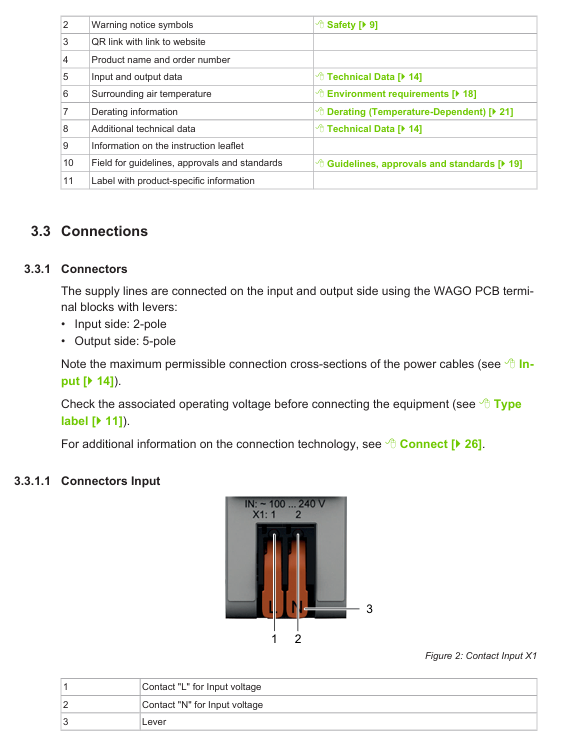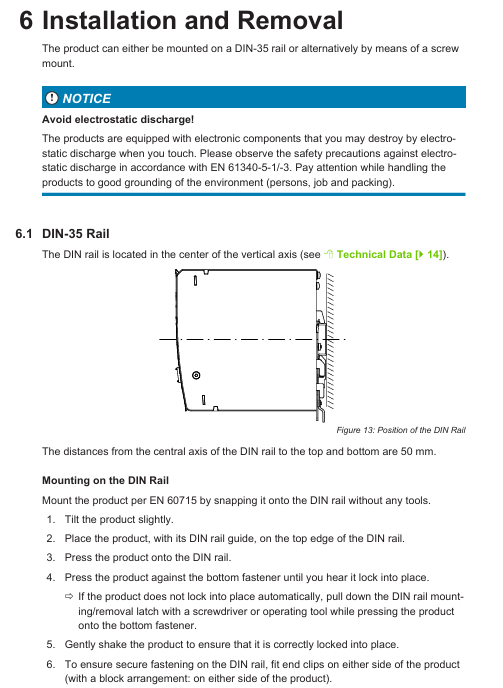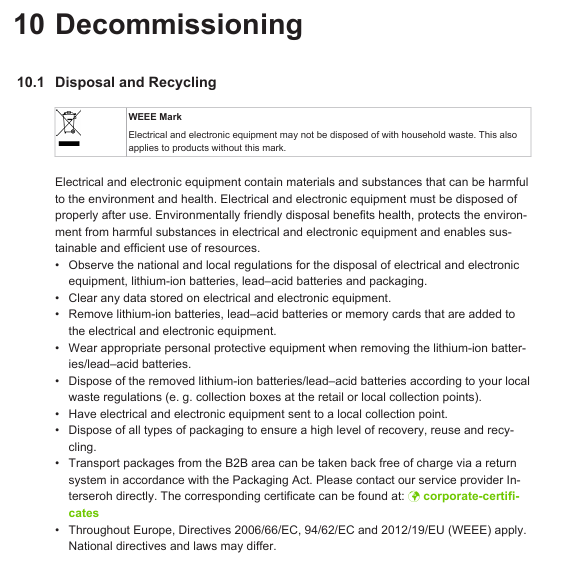

K-WANG


WAGO series molded case circuit breaker (MCCB)
Core function of the product: As a key protective component of low-voltage distribution networks, it can detect and disconnect faults such as overload, short circuit, and grounding faults, and protect the safety of circuits and electrical equipment.
WAGO series molded case circuit breaker (MCCB)
Product Scope and Manual Positioning
1. Product details for adaptation
Clearly cover the specific series of WAGO molded case circuit breakers, list the core compatible models (including sub models with different rated currents and breaking capacity levels), and label the product application scenario boundaries (such as industrial distribution, building power supply, and other low-voltage distribution systems).
Core function of the product: As a key protective component of low-voltage distribution networks, it can detect and disconnect faults such as overload, short circuit, and grounding faults, and protect the safety of circuits and electrical equipment.
2. Core purpose of the manual
Target audience: Electrical installation personnel, maintenance technicians, equipment management personnel (with corresponding electrical qualifications).
Core value: Provide standardized and compliant operating basis, avoid equipment damage, electric shock, fire and other safety risks caused by installation errors, improper operation, and maintenance deficiencies, while ensuring stable product performance.
Important statement: The manual specifies the minimum requirements for safe use of the product, which must be implemented in conjunction with the on-site distribution system specifications and local electrical regulations; After the manual is revised, the latest version shall prevail, and the content of the old version shall automatically become invalid.
Safety Warning and Basic Requirements
1. Core security warning
Electrical safety: All operations must be carried out after power failure, and it is necessary to confirm that there is no residual voltage in the circuit (using professional electrical inspection tools). Live installation, wiring, or disassembly are prohibited.
Protection requirements: Insulated gloves, goggles and other protective equipment should be worn during operation to avoid injuries caused by electric arc burns and metal debris splashes.
Prohibited scenarios: It is strictly prohibited to modify the core components of circuit breakers (such as release devices and arc extinguishing chambers); It is strictly prohibited to use beyond the rated parameters (current, voltage, breaking capacity); It is strictly prohibited to operate in non-standard environments such as humidity, corrosion, and excessive dust.
Responsibility statement: The manufacturer shall not be held responsible for any equipment malfunctions or safety accidents caused by failure to comply with the manual requirements.
2. Basic usage prerequisites
Personnel qualifications: Operators and maintenance personnel must have low-voltage electrical operation qualifications, be familiar with the principles of power distribution systems and the working mechanism of circuit breakers.
Environmental requirements: Clearly define the environmental conditions for product operation, with a temperature range typically between -5 ° C and 40 ° C, humidity ≤ 95% (no condensation), and altitude ≤ 2000m (reduced capacity is required for use beyond altitude); Keep away from flammable, explosive, strong magnetic fields, and strong vibration sources.
Equipment inspection: Before installation, it is necessary to confirm that the appearance of the circuit breaker is not damaged, the accessories are complete (such as release, operating handle, wiring terminal), and the product nameplate parameters are consistent with the actual usage requirements.

Installation specifications and operating procedures
1. Preparation before installation
Tool preparation: Professional tools such as torque wrenches, crimping pliers, and insulation stripping pliers are required, and the insulation performance of the tools must meet safety standards.
On site inspection: Confirm that the installation plate at the installation location has sufficient strength (able to withstand the weight of the circuit breaker and the electric force during short circuit), and that the installation surface is flat and free of debris; The specifications of the distribution line should match the rated current of the circuit breaker (the wire cross-section and material should meet the requirements).
2. Specific installation process
Fixed method: The circuit breaker is fixed to the mounting plate with bolts, and the bolt torque must comply with the manual regulations (different models correspond to different torque values) to avoid loosening and vibration during operation.
Wiring requirements:
The direction of incoming and outgoing wires should follow the manual markings (reverse wiring is not allowed), and the length of wire stripping should match the depth of the terminal to avoid short circuits caused by exposed conductors being too long.
When tightening the wiring terminals, it is necessary to operate according to the specified torque to prevent excessive looseness from causing excessive contact resistance and heating, or excessive tightening from damaging the terminals.
Multi core wires require the use of crimping terminals, and it is prohibited to directly insert multi stranded wires into the terminal holes.
Attachment installation: If auxiliary contacts, undervoltage release and other accessories need to be installed, they must be connected correctly according to the wiring diagram to ensure that the accessories match the main function of the circuit breaker. After the wiring is completed, the reliability of the accessory action needs to be checked.
3. Check after installation
Mechanical inspection: Manually operate the circuit breaker to close and open, and the action should be smooth without any jamming. The handle position should be clear (with clear identification of the closing, opening, and energy storage status).
Electrical inspection: Confirm that the wiring is not loose, the phase sequence is correct, and the insulation resistance test is qualified (using a 500V megohmmeter, insulation resistance value ≥ 1M Ω).
4. Operating instructions
Closing operation: After ensuring that there are no faults in the circuit, manually turn the handle to the "closing" position, and hear a "click" sound to indicate that the closing is in place; If equipped with an electric operating mechanism, press the control button to complete the closing and observe that the mechanism operates normally.
Opening operation: When opening normally, turn the handle to the "opening" position. After the fault is opened, the fault needs to be checked first, and the release device needs to be reset before closing.
Release adjustment:
Overload release: Adjust the set current within the range specified in the manual based on the load characteristics of the line (not exceeding the rated current of the circuit breaker) to ensure delayed release in case of overload.
Short circuit release: The instantaneous release setting current is adjusted according to the calculated value of the short-circuit current in the distribution system, ensuring quick disconnection during a short circuit and avoiding the expansion of the fault.
Ground fault release (if equipped): Adjust the ground fault action current and delay, and coordinate with system protection.

Maintenance and upkeep requirements
1. Daily maintenance cycle
Regular inspection: Under normal operating conditions, conduct a routine inspection every 6 months; In harsh environments (high dust, high humidity, frequent operation), reduce to once every 3 months.
Annual maintenance: Conduct comprehensive maintenance once a year, synchronized with power outage maintenance of the distribution system.
2. Maintain projects and operations
Appearance inspection: Check whether the circuit breaker casing and operating handle are damaged or discolored, and whether there are any signs of heating on the terminals (such as oxidation or burnt black).
Mechanical performance inspection: Operate the closing and opening of the circuit several times to check whether the action is smooth and whether the tripping mechanism is sensitive; The energy storage mechanism (if any) can reliably maintain energy after storage and act quickly when released.
Electrical performance inspection:
Measure insulation resistance to ensure there is no insulation aging or moisture damage.
To check the accuracy of the release action, it can be tested by simulating overload and short circuit conditions (professional equipment is required, and blind testing on site is prohibited).
Cleaning requirements: Use a dry brush or compressed air (pressure ≤ 0.4MPa) to remove dust from the surface and terminals of the circuit breaker. It is prohibited to use wet cloths or organic solvents for cleaning.
3. Maintain taboos
Non professionals are prohibited from disassembling core components such as circuit breakers, arc extinguishing chambers, and release devices. Disassembling them will cause the product to lose its protective function and cannot guarantee sealing.
It is prohibited to change the setting parameters of the release during maintenance (unless there is a clear load adjustment requirement and it is operated by professional personnel).
During the maintenance process, it is necessary to cut off power throughout the entire process and hang a "under maintenance, no closing" sign to prevent others from making mistakes.
Troubleshooting and Solutions
1. Common faults and their solutions
Possible causes and solutions for the fault phenomenon
Unable to close 1. The fault has not been resolved and the release has not been reset; 2. The operating mechanism is stuck; 3. The auxiliary contacts have not been reset; 4. Power failure of electric operating mechanism: 1. Check for short circuit and overload faults, and manually reset the release; 2. Check if there are any foreign objects in the organization, clean them and test them; 3. Check the auxiliary contact wiring and repair the poor contact of the contacts; 4. Check the power supply of the operating mechanism and restore power supply
Wrong tripping (tripping when there is no fault) 1. Overloaded tripping device setting current is too low; 2. There is harmonic interference in the line; 3. The release device is damaged; 4. Excessive ambient temperature leads to misoperation of the release device. 1. Adjust the setting current again according to the actual load current; 2. Investigate harmonic sources and install filtering devices if necessary; 3. Replace the damaged release device; 4. Improve ventilation conditions and reduce environmental temperature
Opening failure: 1. Operating mechanism failure (such as spring failure or jamming); 2. The release device is damaged; 3. Loose wiring causes the mechanism to fail to interlock. 1. Disassemble and inspect the mechanism, replace the faulty spring, or clean any stuck foreign objects; 2. Replace the release device; 3. Tighten the wiring to ensure normal linkage of the mechanism
Terminal heating: 1. Loose wiring; 2. The cross-sectional area of the wire is too small; 3. Terminal oxidation or poor contact: 1. Re tighten the terminal according to the specified torque; 2. Replace the wires that meet the requirements; 3. Clean the terminal oxide layer and replace the terminal if necessary
Abnormal noise of circuit breaker: 1. Loose installation leads to vibration; 2. Wear or looseness of institutional components; 3. Electromagnetic noise during overload operation: 1. Re tighten the circuit breaker to enhance installation stability; 2. Check the components of the mechanism, replace worn parts, and tighten loose parts; 3. Investigate the cause of overload and reduce the load to the rated range
2. Fault handling principles
Before the fault is thoroughly investigated, it is forbidden to forcefully close the switch to avoid expanding the scope of the fault or causing safety accidents.
If the circuit breaker experiences serious malfunctions such as damage to the arc extinguishing chamber, deformation of the outer shell, or burning of internal parts, maintenance is prohibited and the circuit breaker of the same model must be replaced directly.
After troubleshooting, action testing and electrical performance testing are required to confirm that there are no issues before resuming operation.
Technical parameters and compliance statement
1. Core technical parameters
Rated parameters: Clearly define key parameters such as the rated voltage (e.g. AC 400V/690V), rated current (e.g. 100A~630A), rated breaking capacity (e.g. Icu=50kA), and rated short-time withstand current (Icw) of the circuit breaker.
Release parameters: overload release setting current range, short-circuit release setting current level, ground fault release action current and delay range.
Mechanical parameters: number of operations (mechanical life, electrical life), closing time, opening time, etc.
2. Compliance and Usage Restrictions
Compliance standards: The product complies with international and domestic industry standards such as IEC 60947-2 and GB 14048.2, and has passed relevant certifications (such as CE certification).
Usage restrictions: Clearly state that the product is not suitable for special environments (such as strong corrosion, strong radiation, explosion-proof scenarios). If it needs to be used in special scenarios, a dedicated model must be selected.
Warranty Statement: The product warranty period shall be executed in accordance with the manufacturer's regulations, and the warranty scope does not include damage caused by improper operation or maintenance.

- YOKOGAWA
- Energy Access
- Renewable Integration
- Energy Subsidies
- Energy and Water
- Net zero emission
- Energy Security
- Critical Minerals
- A-B
- petroleum
- Mine scale
- Energy and Gender
- Covid-19
- man-machine
- Reliance
- ADVANCED
- SEW
- ProSoft
- WATLOW
- Kongsberg
- FANUC
- VSD
- DCS
- PLC
- Sewage treatment
- cement
- Yaskawa
- Woodward
- BOSCH Rexroth
- MOOG
- General Electric
- American NI
- Rolls-Royce
- CTI
- Honeywell
- EMERSON
- Automobile market
- xYCOM
- Motorola
- architecture
- Industrial information
- New energy
- electricity
- Construction site
- HIMA
- ABB
- Rockwell
- Schneider Modicon
- Siemens
- MAN
- GE
- TRICONEX
- Control Wave
- ALSTOM
- AMAT
- STUDER
- KONGSBERG
- MOTOROLA
- DANAHER MOTION
- Bentley
- Galil
- EATON
- MOLEX
- Triconex
- DEIF
- B&W
- ZYGO
- Aerotech
- DANFOSS
- KOLLMORGEN
- Beijer
- Endress+Hauser
- schneider
- Foxboro
- KB
- REXROTH
- YAMAHA
- Johnson
- Westinghouse
- WAGO
-
Kollmorgen S33GNNA-RNNM-00 - Brushless Servo Motor
-
Kollmorgen 6sm56-s3000-g-s3-1325 - Servo Motor
-
Kollmorgen AKM52K-CCCN2-00 - Servo Motor
-
Kollmorgen PSR3-230/75-21-202 - Power Supply
-
Kollmorgen akm24d-anc2r-00 - Servo Motor
-
Kollmorgen AKM22E-ANCNR-00 - Servo Motor
-
Kollmorgen S60300-550 - Servo Drive
-
Kollmorgen B-204-B-21 - Servomotor
-
Kollmorgen AKM21E-BNBN1-00 - Servo Motor
-
Kollmorgen TT2953-1010-B - DC Servo Motor
-
Kollmorgen pa8500 - Servo Power Supply
-
Kollmorgen BDS4A-210J-0001-207C2 - Servo Drive
-
Kollmorgen TTRB1-4234-3064-AA - DC Servo Motor
-
Kollmorgen MH-827-A-43 - Servo Motor
-
Kollmorgen AKM24D-ACBNR-OO - Servo Motor
-
Kollmorgen 00-01207-002 - Servo Disk DC Motor
-
Kollmorgen AKM21C-ANBNAB-00 - Servo Motor
-
Kollmorgen PSR3-208/50-01-003 - Power Supply
-
Kollmorgen 6SM56-S3000 - Servo Motor
-
Kollmorgen DBL3H00130-B3M-000-S40 - Servo Motor
-
Kollmorgen 6SN37L-4000 - Servo Motor
-
Kollmorgen AKM65K-ACCNR-00 - Servo motor
-
Kollmorgen 6SM56-L3000-G - Servo Motor
-
Kollmorgen AKMH43H-CCCNRE5K - Servo Motor
-
Kollmorgen PSR4/52858300 - Power Supply
-
Kollmorgen KBM-79H03-E03 - Direct Drive Rotary Motor
-
Kollmorgen AKM33E-ANCNDA00 - Servo Motor
-
Kollmorgen U9M4/9FA4T/M23 - ServoDisc DC Motor
-
Kollmorgen AKM13C-ANCNR-00 - Servo Motor
-
Kollmorgen AKM43L-ACD2CA00 - Servo Motor
-
Kollmorgen AKM54K-CCCN2-00 - Servo Motor
-
Kollmorgen M-605-B-B1-B3 - Servo Motor
-
Kollmorgen AKD-P00606-NBAN-0000 - Rotary Drive
-
Kollmorgen 6SM-37M-6.000 - Servo Motor
-
Kollmorgen A.F.031.5 - Sercos Interface Board
-
Kollmorgen 918974 5054 - Servo PWM
-
Kollmorgen U12M4 - ServoDisc DC Motor
-
Kollmorgen AKD-B00606-NBAN-0000 - Servo Drive
-
Kollmorgen MV65WKS-CE310/22PB - Servo Drive
-
Kollmorgen 65WKS-CE310/22PB - Servo Drive
-
Kollmorgen EM10-27 - Module
-
Kollmorgen S64001 - Servo Drive
-
Kollmorgen CR03200-000000 - Servo Drive
-
Kollmorgen 6SM57M-3000+G - Servo Motor
-
Kollmorgen BDS4 - Servo Drive
-
Kollmorgen AKD-P00306-NBEC-000 - Servo Drive
-
Kollmorgen AKD-B01206-NBAN-0000 - Servo Drive
-
Kollmorgen STP-57D301 - Stepper Motor
-
Kollmorgen 6SM37L-4.000 - Servo Motor
-
Kollmorgen 44-10193-001 - Circuit Board
-
Kollmorgen PRDR9SP24SHA-12 - Board
-
Kollmorgen PRD-AMPE25EA-00 - Servo Drive
-
Kollmorgen DBL3N00130-0R2-000-S40 - Servo Motor
-
Kollmorgen S406BA-SE - Servo Drive
-
Kollmorgen AKD-P00607-NBEI-0000 - Servo Drive
-
Kollmorgen AKD-P01207-NBEC-0000 - Servo Drive
-
Kollmorgen CR03550 - Servo Drive
-
Kollmorgen VSA24-0012/1804J-20-042E - Servo Drive
-
Kollmorgen N2-AKM23D-B2C-10L-5B-4-MF1-FT1E-C0 - Actuator
-
Kollmorgen 04S-M60/12-PB - Servo Drive
-
Kollmorgen H33NLHP-LNW-NS50 - Stepper Motor
-
Kollmorgen A-78771 - Interlock Board
-
Kollmorgen AKM43E-SSSSS-06 - Servo Motor
-
Kollmorgen AKD-P00607-NBEC-0000 - Servo Drive
-
Kollmorgen E21NCHT-LNN-NS-00 - Stepper Motor
-
Kollmorgen cr10704 - Servo Drive
-
Kollmorgen d101a-93-1215-001 - Motor
-
Kollmorgen BDS4A-203J-0001-EB202B21P - Servo Drive
-
Kollmorgen MCSS23-6432-002 - Connector
-
Kollmorgen AKD-P01207-NACC-D065 - Servo Drive
-
Kollmorgen CK-S200-IP-AC-TB - I/O Adapter and Connector
-
Kollmorgen CR10260 - Servo Drive
-
Kollmorgen EC3-AKM42G-C2R-70-04A-200-MP2-FC2-C0 - Actuator
-
Kollmorgen BDS5A-206-01010-205B2-030 - Servo Drive
-
Kollmorgen s2350-vts - Servo Drive
-
Kollmorgen AKM24D-ANC2DB-00 - Servo Motor
-
Kollmorgen E31NCHT-LNN-NS-01 - Stepper Motor
-
Kollmorgen PRD-0051AMPF-Y0 - Servo Board
-
Kollmorgen TB03500 - Module
-
Kollmorgen 60WKS-M240/06-PB - Servo Drive
-
Kollmorgen M21NRXC-LNN-NS-00 - Stepper Motor
-
Kollmorgen H-344H-0212 - Servo Motor
-
Kollmorgen MCSS08-3232-001 - Connector
-
Kollmorgen AKM33H-ANCNC-00 - Servo Motor
-
Kollmorgen PA-2800 - Power Supply
-
Kollmorgen MTC308C1-R1C1 - Servo Motor
-
Kollmorgen PRDR0091300Z-00 - Capacitor Board
-
Kollmorgen BDS4A-206J-0024/01502D79 - Servo Drive
-
Kollmorgen S20330-VTS - Servo Drive
-
Kollmorgen S20250-CNS - Servo Drive
-
Kollmorgen SBD2-20-1105-WO - Servo Drive Board
-
Kollmorgen M405-C-A1--E1 - Servo Motor
-
Kollmorgen PRD-PB805EDD-00 - Servo Drive
-
Kollmorgen 6SM57S-3.000-J-09-HA-IN - Servo Motor
-
Kollmorgen AKM33H-ANCNDA-00 - Servo Motor
-
Kollmorgen PCB-00030200-04 - PCB
-
Kollmorgen H22SSLB-LNN-NS-02 - Stepper Motor
-
Kollmorgen BJRL-20012-110001 - Module
-
Kollmorgen BDS4A-206J-0001404A - Servo Drive
-
Kollmorgen H-342-H-0802 - Servo Motor
-
Kollmorgen CR10561 - Servo Drive
-
Kollmorgen BDS5A-206-00010-205B2-030 - Servo Drive
-
Kollmorgen BDS5A-206-00010-207B-2-030 - Servo Drive
-
Kollmorgen mcss08-3224-001 - Connector
-
Kollmorgen M-207-B-23-B3 - Servo Motor
-
Kollmorgen PRD-0041200Z-S0 - Encoder/Resolver Card
-
Kollmorgen MH-225-G-61 - Motor
-
Kollmorgen MT308B1-T1C1 - Servo Motor
-
Kollmorgen BDS4A-240J-0001604C83 - Servo Drive
-
Kollmorgen 6SM57-S-3000 - Servo Motor
-
Kollmorgen N-T31V-15-5B-6-MF3-FT1E-C251 - Actuator
-
Kollmorgen PRD-0051AMPA-X0 - Servo Board
-
Kollmorgen CF-SS-RHGE-09 - Cable
-
Kollmorgen DIGIFAS7204 - Servo Drive
-
Kollmorgen S30101-NA - Servo Drive
-
Kollmorgen DIGIFAS7201 - Servo Drive
-
Kollmorgen PRD-0051AMPA-Y0 - Servo Board
-
Kollmorgen AKM23D-EFCNC-00 - Servo Motor
-
Kollmorgen SE10000 - Servo Drive
-
Kollmorgen PSR4/5A-112-0400 - Power Supply
-
Kollmorgen AKM31H-ANCNC-01 - Servo Motor
-
Kollmorgen M-203-B-93-027 - Servo Motor
-
Kollmorgen CP-SS-G1HE-05 - Connector
-
Kollmorgen AKM42G-ASCNR-02 - Servo Motor
-
Kollmorgen DBL4N00750-B3M-000-S40 - Servo Motor
-
Kollmorgen R3-BK23-152B-12-PL-ASE-BS115 - Actuator
-
Kollmorgen MH-427-B-61 - Motor
-
Kollmorgen cr06902 - Servo Drive




